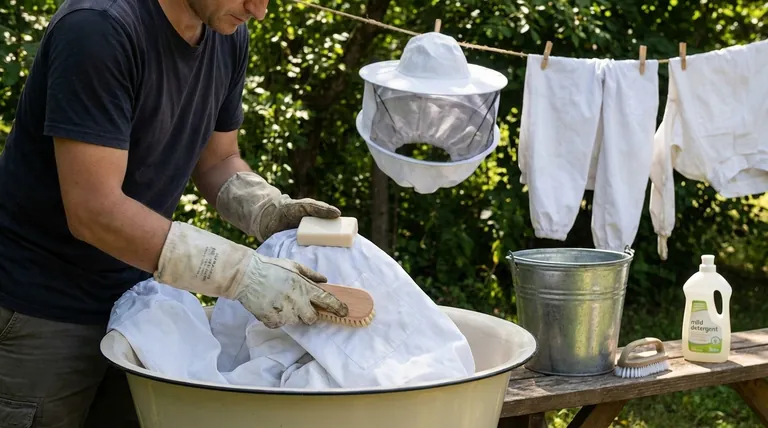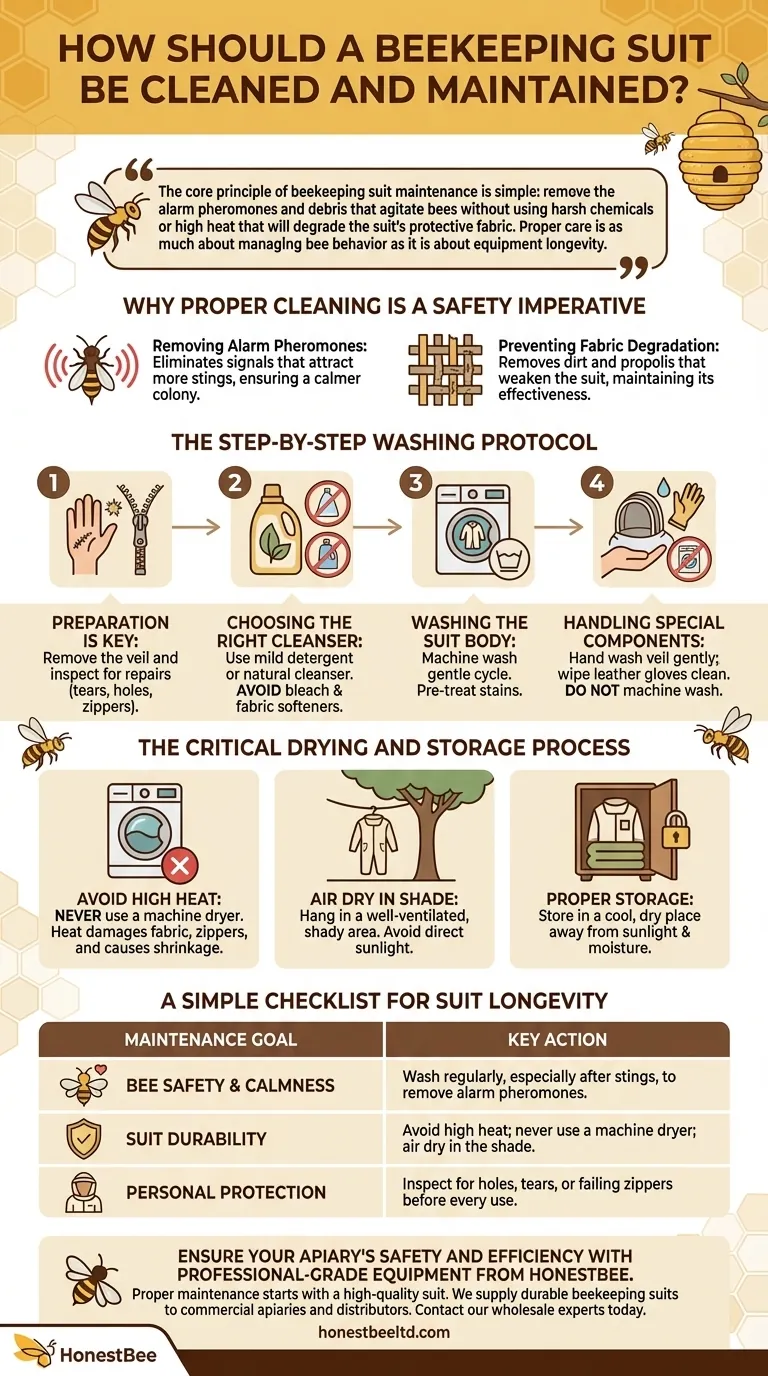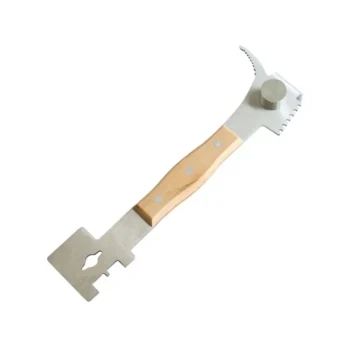Properly cleaning a beekeeping suit involves washing it with a mild detergent, completely avoiding bleach and fabric softeners, and always air-drying it away from direct sunlight. The veil and any leather gloves must be removed and cleaned separately by hand, as a washing machine will damage them.
The core principle of beekeeping suit maintenance is simple: remove the alarm pheromones and debris that agitate bees without using harsh chemicals or high heat that will degrade the suit's protective fabric. Proper care is as much about managing bee behavior as it is about equipment longevity.

Why Proper Cleaning is a Safety Imperative
A clean suit is a critical piece of safety equipment. Neglecting it not only shortens its lifespan but can also make your bees more defensive during inspections.
Removing Alarm Pheromones
When a bee stings, it releases an alarm pheromone. This chemical signal marks the target as a threat, attracting other bees from the colony to the same spot to sting again. Washing your suit removes these residual pheromones, ensuring you start each hive inspection with a "clean slate" and a calmer colony.
Preventing Fabric Degradation
Over time, your suit will accumulate dirt, propolis, and other hive debris. These substances can weaken the fabric fibers, making the suit less effective as a protective barrier.
The Step-by-Step Washing Protocol
Follow a specific process to protect the different components of your suit. Rushing this can lead to irreversible damage.
Preparation is Key
Before washing, always remove the veil from the suit. Most modern suits have a zipper for easy detachment. Also, take this opportunity to inspect the entire suit for any tears, holes, or failing seams that need repair.
Choosing the Right Cleanser
Use a mild laundry detergent without strong fragrances. You can also use natural cleansing agents. It is critical to avoid bleach and fabric softeners, as they can break down the fabric's protective qualities.
Washing the Suit Body
The main body of the suit can typically be machine washed on a gentle cycle. Pre-treating any significant stains before washing can improve results.
Handling Special Components
The veil must never be put in a washing machine or dryer, as the mesh is delicate and easily damaged. Wash it gently by hand. Similarly, if your suit came with leather gloves, they should be wiped clean, not machine washed.
The Critical Drying and Storage Process
How you dry and store your suit is just as important as how you wash it. The wrong method can shrink or ruin the material.
The Dangers of High Heat
Never use a machine dryer for your beekeeping suit. The high heat can damage the fabric, compromise zippers, and shrink the suit, making it less safe and comfortable.
The Ideal Drying Environment
After washing, hang the suit to dry in a shady, well-ventilated area. Direct sunlight should be avoided as prolonged UV exposure can weaken the fabric over time.
Proper Storage
Store your clean, dry suit in a cool, dry place away from direct sunlight and moisture. This prevents mildew and protects the material from degradation, ensuring it's ready for your next inspection.
A Simple Checklist for Suit Longevity
Use these guidelines to match your maintenance routine to your primary goals as a beekeeper.
- If your primary focus is bee safety and calmness: Wash your suit regularly, especially after any stings, to eliminate alarm pheromones.
- If your primary focus is suit durability: Avoid high heat at all costs by never using a machine dryer and hanging the suit to dry in the shade.
- If your primary focus is personal protection: Perform a quick inspection for holes, tears, or failing zippers before every single use.
Consistent and proper care of your suit is a direct investment in your safety and the well-being of your hives.
Summary Table:
| Maintenance Goal | Key Action |
|---|---|
| Bee Safety & Calmness | Wash regularly, especially after stings, to remove alarm pheromones. |
| Suit Durability | Avoid high heat; never use a machine dryer; air dry in the shade. |
| Personal Protection | Inspect for holes, tears, or failing zippers before every use. |
Ensure your apiary's safety and efficiency with professional-grade equipment from HONESTBEE. Proper maintenance starts with a high-quality suit. We supply durable beekeeping suits and essential supplies to commercial apiaries and distributors. Contact our wholesale experts today to discuss your equipment needs and keep your operation running smoothly.
Visual Guide

Related Products
- Cotton Beekeeping Suit and Round Hat with Veil Bee Keeper Protective Gear
- White Beekeeping Protective Suit and Hat with Fencing Veil for Beekeepers
- Economy Polyester Beekeeping Jacket with Veil and Hat
- Beekeeping Jacket with Hood and Veil for Beekeepers
- Professional Beekeeping Suit for Kids and Girls Childrens Bee Keeper Suit
People Also Ask
- What are the benefits of a fully ventilated beekeeping suit? Stay Cool and Protected in Hot Climates
- What are bee suits made of? Choosing the Right Material for Maximum Protection & Comfort
- What is recommended for beginners in beekeeping regarding protective clothing? A Complete Safety Guide for New Beekeepers
- How should a beekeeping suit be hung to maintain its shape? Protect Your Investment with Proper Storage
- Do beekeeping suits completely prevent stings? Maximize Your Apiary Safety with the Right Gear



















